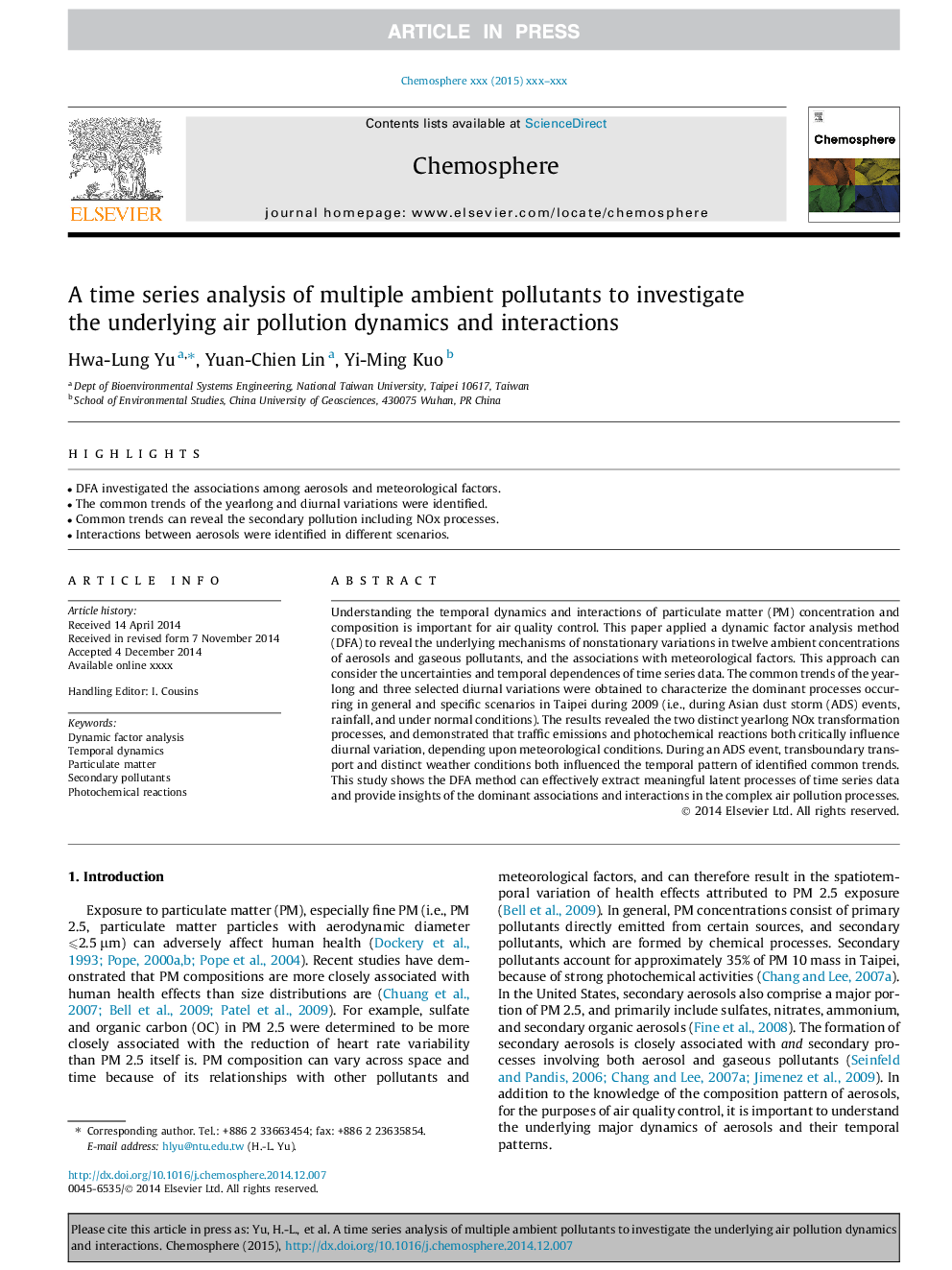| Article ID | Journal | Published Year | Pages | File Type |
|---|---|---|---|---|
| 6307772 | Chemosphere | 2015 | 10 Pages |
Abstract
Understanding the temporal dynamics and interactions of particulate matter (PM) concentration and composition is important for air quality control. This paper applied a dynamic factor analysis method (DFA) to reveal the underlying mechanisms of nonstationary variations in twelve ambient concentrations of aerosols and gaseous pollutants, and the associations with meteorological factors. This approach can consider the uncertainties and temporal dependences of time series data. The common trends of the yearlong and three selected diurnal variations were obtained to characterize the dominant processes occurring in general and specific scenarios in Taipei during 2009 (i.e., during Asian dust storm (ADS) events, rainfall, and under normal conditions). The results revealed the two distinct yearlong NOx transformation processes, and demonstrated that traffic emissions and photochemical reactions both critically influence diurnal variation, depending upon meteorological conditions. During an ADS event, transboundary transport and distinct weather conditions both influenced the temporal pattern of identified common trends. This study shows the DFA method can effectively extract meaningful latent processes of time series data and provide insights of the dominant associations and interactions in the complex air pollution processes.
Keywords
Related Topics
Life Sciences
Environmental Science
Environmental Chemistry
Authors
Hwa-Lung Yu, Yuan-Chien Lin, Yi-Ming Kuo,
